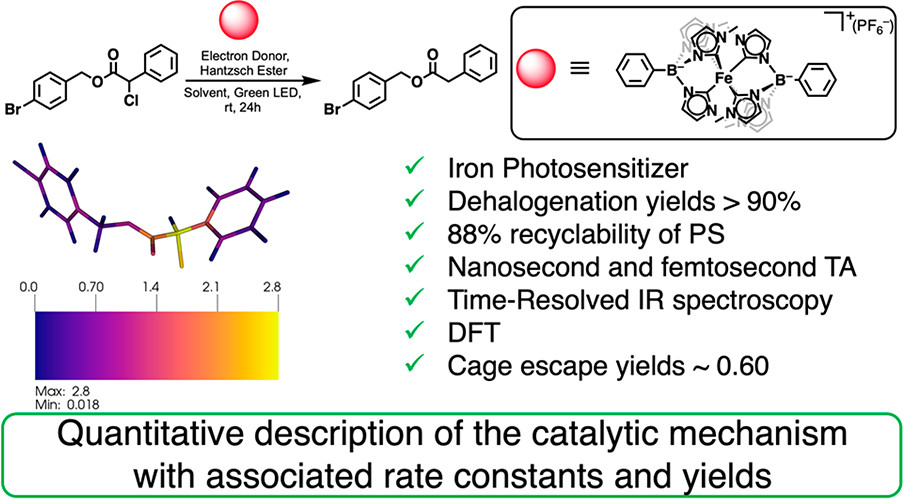Efficient excited-state electron transfer between an iron(III) photosensitizer and organic electron donors was realized with green light irradiation. This advance was enabled by the use of the previously reported iron photosensitizer, [Fe(phtmeimb)2]+ (phtmeimb = {phenyl[tris(3-methyl-imidazolin-2-ylidene)]borate}, that exhibited long-lived and luminescent ligand-to-metal charge-transfer (LMCT)excited states. A benchmark dehalogenation reaction was investigated with catalytic yields that exceed 90% and an enhanced stability relative to the prototypical photosensitizer [Ru(bpy)3]2+. The initial catalytic step is electron transfer from an amine to the photoexcited iron sensitizer, which is shown to occur with a large cage-escape yield. For LMCT excited states, this reductive electron transfer is vectorial and may be a general advantage of Fe(III) photosensitizers. In-depth time-resolved spectroscopic methods, including transient absorption characterization from the ultraviolet to the infrared regions, provided a quantitative description of the catalytic mechanism with associated rate constants and yields.
Aydogan, A.; Bangle, R. E.; Cadranel, A.; Turlington, M. D.; Conroy, D. T.; Cauët, E.; Singleton, M. L.; Meyer, G. J.; Sampaio, R. N.; Elias, B.; Troian-Gautier, L. Accessing Photoredox Transformations with an Iron(III) Photosensitizer and Green Light. J. Am. Chem. Soc. 2021, 143 (38), 15661-15673. http://dx.doi.org/10.1021/jacs.1c06081
